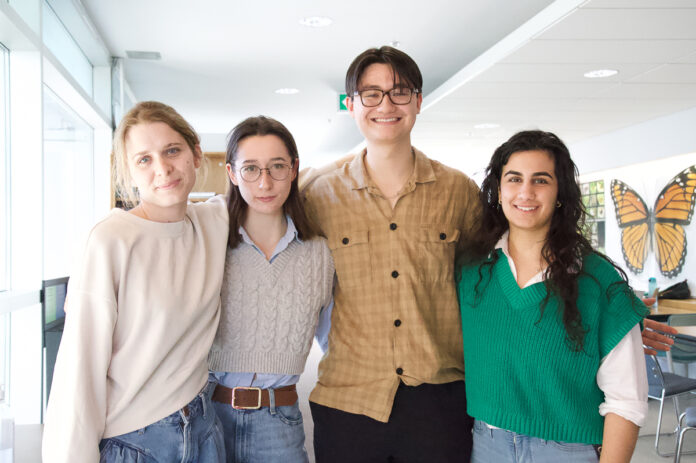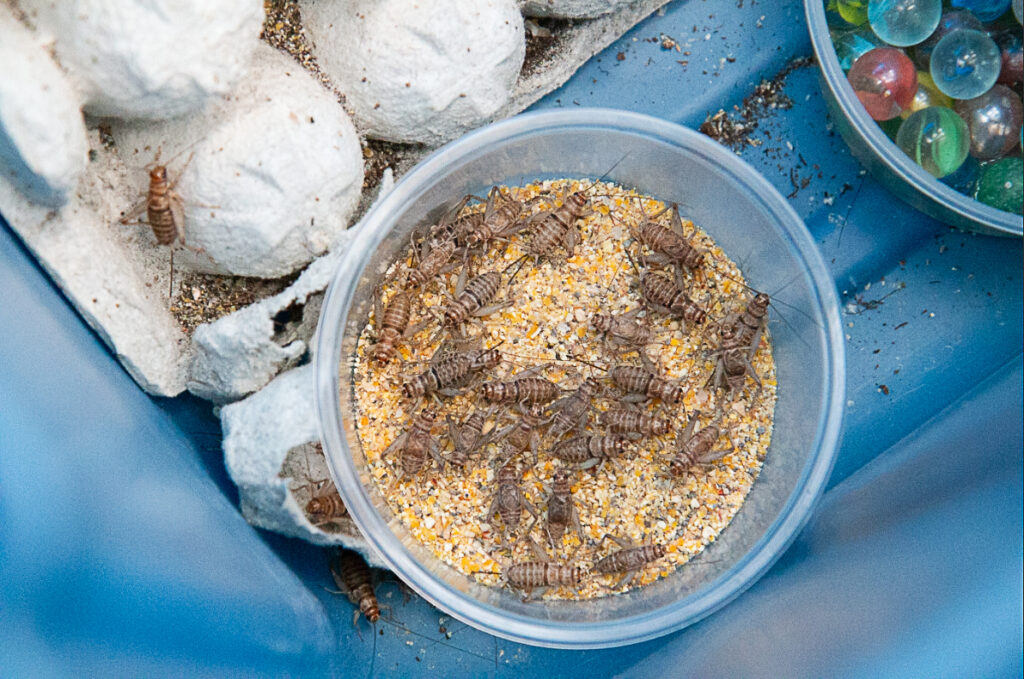
A Carleton University research team is preparing to test the effects of microgravity on crickets this summer. Insecta researchers say the “nutty” insects might be the key to sustainable space food.
“Crickets are very high in protein and Vitamin B-12,” Emily McColville, a master of biology student on the team, told the Charlatan from Insecta’s Nesbitt Building lab.
“They can also be reared in pretty much any environment, lots of temperatures and very small spaces.”
McColville said she believes crickets could be raised on waste products in a space-food setting.
“Hopefully, this can be an early step in astro agriculture,” she said. “But before using them as a long-term space food, we have to research how they might fare.”
In the fall of 2023, the Canadian Reduced Gravity Experiment Design Challenge selected Insecta and three other research teams to design experiments for a late-July flight aboard a Falcon 20 jet.
“The jet goes up into a parabola and then down into freefall,” McColville said. “You’ll get about 20 to 40 seconds of zero-gravity hang time in between those parabolas.”
McColville said the team expects the parabolic flight to expose the crickets to space-like stressors, including vibration, noise and temperature fluctuations.
“We’re hoping to bring the crickets down and run some different tests on them […] to look at how their viral loads are affected,” she said.
She added the team is testing crickets’ viral loads because many crickets carry latent viruses, which can lay dormant before “opportunistically” emerging when a host is under stress.
“We’re wondering if the stresses of space flight will leave room for these viruses to opportunistically activate,” McColville said.
McColville said while little is known about what causes latent viruses to express in crickets, they aren’t known to threaten human health.
“[Latent viruses] would really just harm the crickets’ development,” she said. “It might not be a stable colony.
“But for a person, they wouldn’t cause an issue.”

Though crickets are not subject to animal welfare restrictions, McColville said the team is “very mindful” of the ethics of their experiments. She said the team keeps the cricket’s containers clean and frequently swaps out their food and water.
“Even though that might not be regulated, that’s something we as a lab try to do to the best of our ability,” McColville said.
The Carleton community’s response to eating crickets has been “mixed,” Hunter Brzezinski, a fourth-year biology student and Insecta member, said with a laugh.
Brzezinski said the team hosted a November demonstration with cricket-based products, including cake pops, in Carleton’s cafeteria.
That said, crickets are “not necessarily replacing your steaks” and can be used in many nutritional contexts beyond snacking, said Sophie Kasdorf, a PhD candidate and Insecta team member.
“A lot of the applicability of insects is towards things like pet food or livestock food.”
Serving crickets whole “turns people off very often,” Cassandra Stabile, a fourth-year biology student on the team, said.
“They can be brought down to a flour or made into something else,” Stabile added. “That’s a lot more palatable for most people.”
Kasdorf said that the Insecta team snacks on crickets often — the commercially approved kind, not their test subjects.
“We’ve had cricket Cheeto puffs, whole-roasted crickets with chili and cricket pancakes,” she added. “You can do a lot of stuff with them.”
“Tons of cultures and communities already eat insects,” Kasdorf noted. In fact, as much as 80 per cent of the world eats bugs.
“There was an initial mental barrier of people wanting to try crickets,” Brzezinski said. “But once they did, they liked it.”
Featured image by Elissa Mendes.





